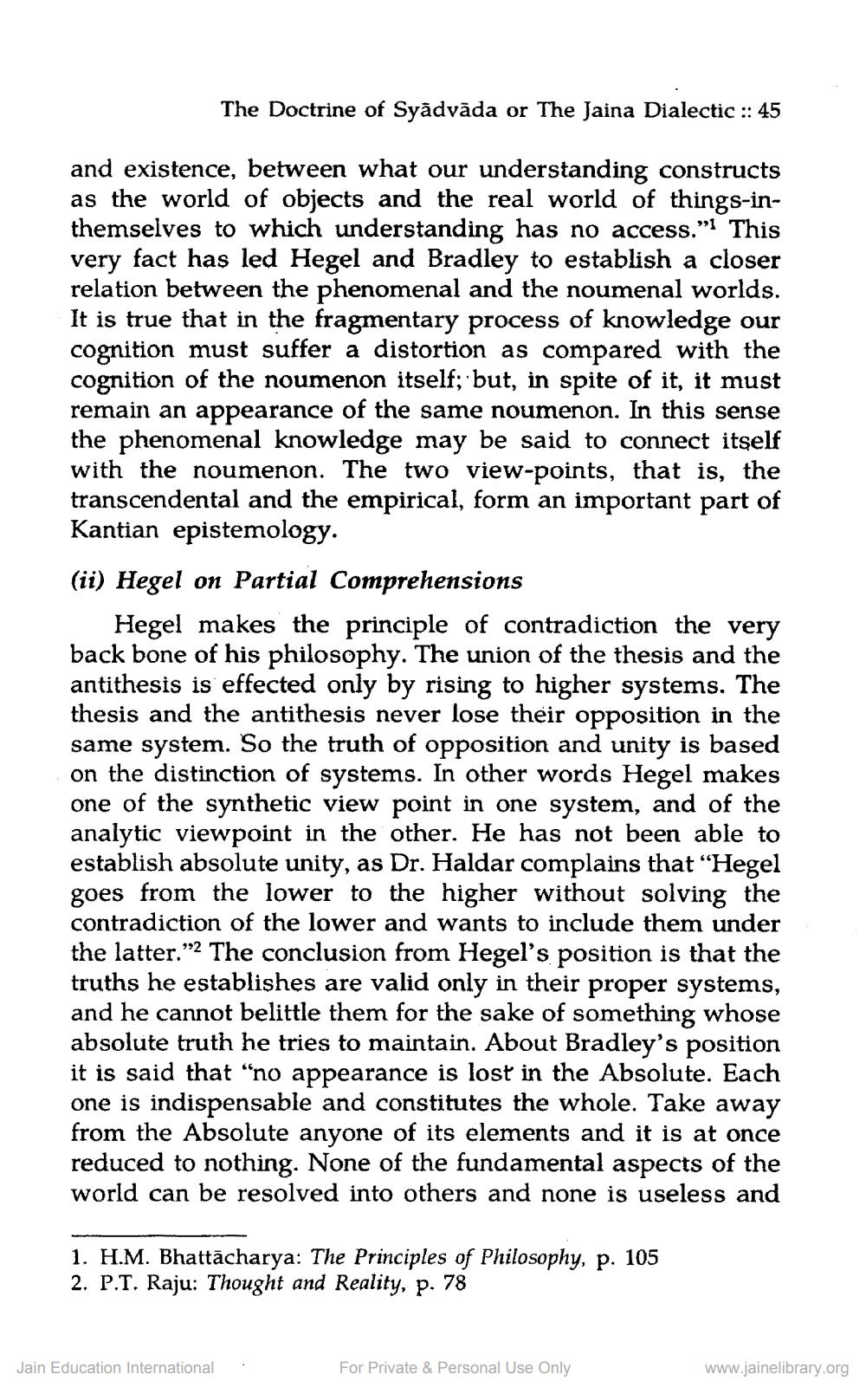________________
The Doctrine of Syādvāda or The Jaina Dialectic :: 45
and existence, between what our understanding constructs as the world of objects and the real world of things-inthemselves to which understanding has no access.”! This very fact has led Hegel and Bradley to establish a closer relation between the phenomenal and the noumenal worlds. It is true that in the fragmentary process of knowledge our cognition must suffer a distortion as compared with the cognition of the noumenon itself; but, in spite of it, it must remain an appearance of the same noumenon. In this sense the phenomenal knowledge may be said to connect itself with the noumenon. The two view-points, that is, the transcendental and the empirical, form an important part of Kantian epistemology. (ii) Hegel on Partial Comprehensions
Hegel makes the principle of contradiction the very back bone of his philosophy. The union of the thesis and the antithesis is effected only by rising to higher systems. The thesis and the antithesis never lose their opposition in the same system. So the truth of opposition and unity is based on the distinction of systems. In other words Hegel makes one of the synthetic view point in one system, and of the analytic viewpoint in the other. He has not been able to establish absolute unity, as Dr. Haldar complains that “Hegel goes from the lower to the higher without solving the contradiction of the lower and wants to include them under the latter."2 The conclusion from Hegel's position is that the truths he establishes are valid only in their proper systems, and he cannot belittle them for the sake of something whose absolute truth he tries to maintain. About Bradley's position it is said that "no appearance is lost in the Absolute. Each one is indispensable and constitutes the whole. Take away from the Absolute anyone of its elements and it is at once reduced to nothing. None of the fundamental aspects of the world can be resolved into others and none is useless and
1. H.M. Bhattācharya: The Principles of Philosophy, p. 105 2. P.T. Raju: Thought and Reality, p. 78
Jain Education International
.
For Private & Personal Use Only
www.jainelibrary.org




